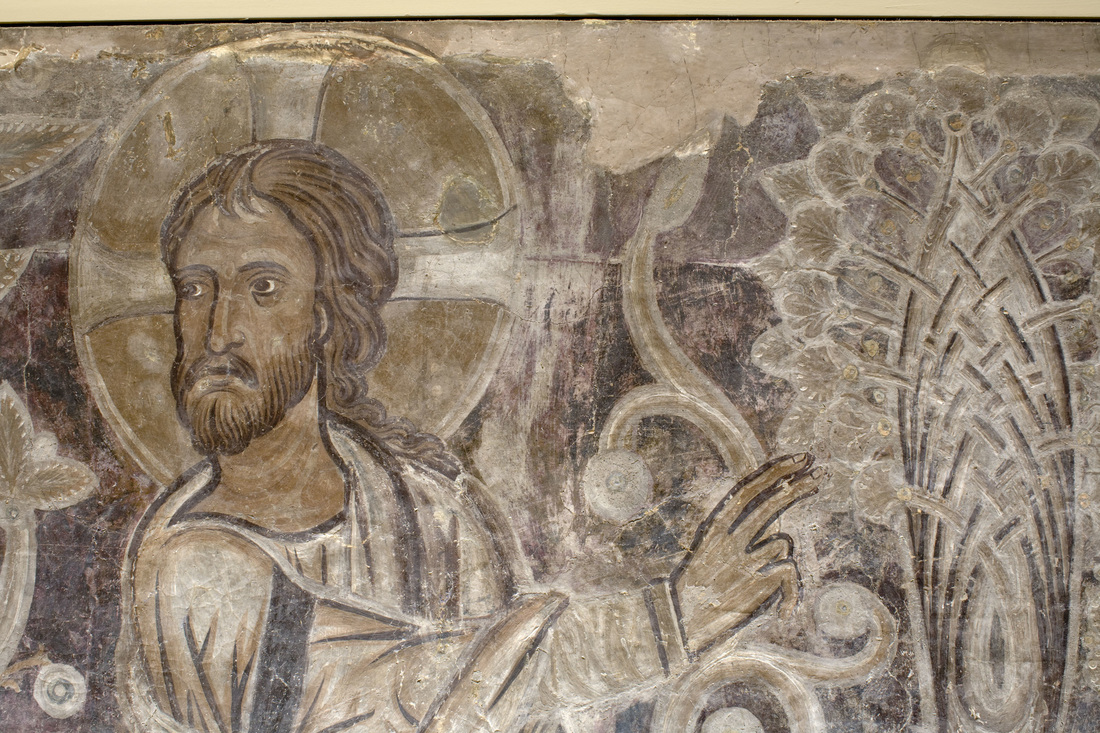 I did not, of course, study this beautiful puffin on the Isle of Muck, or the Hebrides or wherever outward bound types go for their holidays. My talented photographer friend Christopher did, however, and gave me permission to use his shots. He takes the most wonderful pictures of fauna and flora on his rambles and travels but doesn't have a website - track him down on Facebook and insist he starts one! Meanwhile this little piece awaits an owner at the Norton Way Gallery. I spied this hanging at an exhibition of international textile artists in the Lake District a couple of weeks back: Roublev-style angels interpreted in quilting and machine embroidery. Unfortunately I managed to cut the artist's name off in my photograph and now can't remember the surname, which was Russian. There was a lot of text used in the design, but it didn't help me decide what the hanging 'meant' or why icons were the subject of it.
Once upon a time, around eight hundred years ago, a group of English artists took a study trip to the fabulous Byzantine church mosaics newly installed in the Kingdom of Sicily. On their way back to Canterbury they worked their passage round the Mediterranean painting a few chapels and castles as they went. The abbess of a wealthy convent in Aragon (the south of Spain) seized the opportunity to have the refectory done out with the latest in pious interiors: the team executed a complete biblical sequence in double quick time and went back home to work (inter alia) on the Winchester Bible, a priceless treasure of English illumination. The convent gradually fell on hard times but the frescoes endured, unnoticed by anyone but a passing art historian in the 1930s who recognised their quality and importance and took some black and white photos of the images. Shortly afterwards the whole lot was burnt to the ground in the Civil War, leaving the frescoes roofless, leached of colour by the heat and scorched to the underpainting. Some decades after, using a pioneering technique, the surviving remnants were removed and re-installed in a specially built room of the Museum of Calalunyan Art in Barcelona, where they remained ever after, largely ignored by tourists but nevertheless a priceless testament to the lost beauties of medieval Christian art.
That museum has been on my bucket list for a long time and I finally had the opportunity to make a pilgrimage to study them in the flesh last week. The Sigena frescoes are installed high up on arches and barrel vaults, so I still have a crick in the neck from viewing them. Here is a taster: the first photo shows the the frescoes as they are now, bleached to the underpainting; the second shows the only section where the original colour remains; the third photo is a clever digital colour reconstruction which I found on the web; the fourth is a detail from the Winchester Bible, showing the artistic relation of the two. The frescoes are only a tiny part of the fabulous art treasures on display, from the Visigoths to the Modernistas and Picasso. |
The view from my deskCurrent work, places and events, art travel, and interesting snippets about Christian icons, medieval art, manuscript illumination, egg tempera,, gilding, technique and materials. Categories
All
Archives
January 2024
|






 RSS Feed
RSS Feed